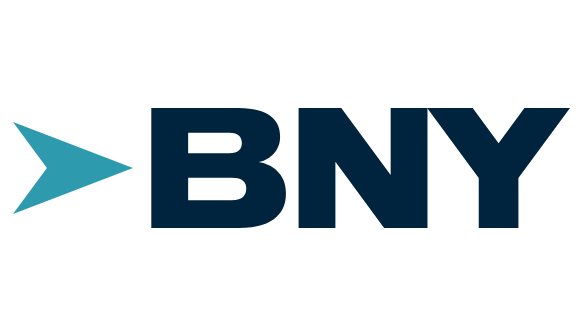With the industry move to a new T+1 settlement cycle as of May 28, many fund managers may continue to be unaware of the knock-on effects on FX transactions. Ed McGann, Global Head of FX Platform Sales at BNY Mellon, explores the impact of the changes for fund managers, and how banks have been preparing to support clients in navigating compressed settlement times.
Presently, one of the most significant changes to the settlements landscape in decades is in play. On May 28, 2024, the United States Securities and Exchange Commission has scheduled all securities settlements to move from a T+2 to a T+1 cycle. In preparation, the updating of securities settlement timings and affirmations requirements have been the priority for many across the industry – with a similar approach being applied to when these settlements moved from T+3 to T+2 in 2017. After all, the market implemented that transition with little disruption, so a “blueprint” of how to successfully transition to T+1 is effectively already in place. Or is it?
T+1 is, in fact, a completely different ballgame, and this time around, the effects are both greater and wider reaching. Moreover, the all-consuming focus on ensuring securities settlements are ready has left a key component of the puzzle forgotten: FX settlement. Compressing settlement cycles to this degree – while very much beneficial in terms of enhancing efficiencies for securities settlements – is set to have the indirect consequence of posing major challenges for global FX market synchronization. For fund managers in Europe and Asia, significant disruption is very much in the cards. And those that have not already prepared need to do so quickly to avoid trade fails.
How time zones turn T+1 to T+0 for Europe and Asia
Moving from T+2 to T+1 intuitively seems like a reduction in one day for institutions to conduct post-trade activities. But the reality is more daunting. Taking time zone differences into account, the post-trade operational time will not halve, but be reduced significantly more. The Association for Financial Markets in Europe (AFME) estimates the settlement window will reduce by 83%.1 And, the further east you go, the smaller and smaller that window becomes. In some cases, T+1 is in fact removing the whole of the only business day between trading and settlement – meaning fund managers in these locations will be operating on a T+0 basis.
For example, if you are a fund manager looking to purchase U.S. equities and are London-based, in the current T+2 environment you would typically execute at market close in the U.S. – i.e., 4 p.m. EST, 9 p.m. GMT. The FX component to fund the trade would then be arranged the following morning to maximize capital. But this "overnight approach” becomes impossible under T+1.
If you are a fund manager looking to do the same thing in Hong Kong – which is 12 hours ahead of New York, meaning its market has closed before the U.S. market even opens – T+1 in the U.S. effectively translates to T+0. Moreover, for frontier and emerging markets in the wider region, where currency flows may be more restricted due to local regulations, T+1 settlement will present logistical challenges even beyond those outlined.
Further complexities arise if a non-U.S. public holiday falls on T+1. Settlement dates traditionally fall on business days for each currency pair, but if one currency settlement falls on a public holiday, this shifts the timing one business day in the future. A European-based manager with a Euro denominated fund wanting to buy U.S. equities will be unable to book the FX trade on T if T+1 is a holiday in their home country, as the trade cannot settle on T+1. There will also not be any liquidity available.
Compounding the disruption, the Continuous Linked Settlement (CLS) utility, which ensures both sides of a currency trade get paid, is not making any operational changes to accommodate the shift. As such, when trades are executed on T+1 at market close in the U.S., fund managers will only have two hours to book the FX trade before the CLS cut off. The ability to settle within this window is currently limited – and could mean that investors in Asia and Europe must settle outside of CLS which, in turn, introduces significant settlement risks.
Consequently, market participants across Europe and Asia, irrespective of their size, need to readjust their FX settlement processes to accommodate tighter turnaround times. This necessitates no less than a full front-to back assessment of workflows to understand how FX funding processes will be impacted and identify where challenges – and opportunities – may arise. The Depository Trust and Clearing Corporation (DTCC) provides a dedicated facility for market stakeholders to check if their systems will be up to the test.
T+1: Late for a Very Important Date?
As markets adjust to the reality of one-day securities settlement in North America, what FX and funding complications could laggards face? And what systemic risks are market participants worried about if settlement fails rise?
FX navigation strategies
There are routes that managers can take to try to overcome these logistical obstacles, but they are far from ideal and introduce levels of operational risk. Prefunding transactions by booking FX trades before security trades is one option. This involves prepurchasing U.S. dollars based on an informed guess as to the amount needed to buy the equities and then adjusting that based on the actual figure when it becomes known. This approach results in missing delta, as well as significant portfolio drag, with funds left sitting unproductively in investors’ accounts instead of being optimized in the lead up to settlement.
Alternatively, FX trades could be booked as T+0 prior to relevant cut-offs on the day of the security trade. More extreme measures could involve managers asking brokers to book T+1 equity trades on T+2, allowing for FX to also settle on T+2 scheduling. These solutions are highly manual and would be impractical as a permanent strategy for T+1.
For some, establishing an operation in the U.S. could be a direction worth considering. This would provide greater control and eradicate any T+1 FX issues. But it is an extremely involved and costly process, requiring legal approval and obtaining licenses, as well as establishing premises and a workforce. Even for those that could be tempted by this option, it would not be achievable given the impending T+1 deadline, so that ship has effectively sailed. Another potential avenue to explore is introducing night shifts for processing teams in order to better align with North America’s time zone.
The solution employed will largely depend on the size and capacity of the company, as well as considerations regarding current fluctuating interest rates, changing global regulations and tighter business environments.
Regardless, failure to act by the T+1 migration date will invariably result in settlement failures and increased operational costs or, alternatively, sizeable overdraft fees due to withdrawals made to mitigate the trade fails.
T+1: transition and readiness
Resources including key insights, frequently asked questions and news relating to the transition to T+1.
Tackling T+1 together
Although time is ticking, it is not too late to leverage a long standing, automated service. This involves outsourcing the operation to a custodian bank – which are positioned to support clients in the new T+1 landscape. Custodian banks have actively been preparing for the changes and what they mean for FX, examining the liquidity crunch, the late day trading and how they can help clients can not only navigate the upcoming requirements, but maximize opportunities on offer. And this can occur in a transparent and efficient manner.
Fundamentally, a core part of their business model centers on acting on their clients’ behalf using preagreed standing instructions, and this tried and tested method maps perfectly to the demands of the new FX world. By setting in place these arrangements, a custodian bank – uniquely positioned to aggregate equity executions, work out funding requirements and support with efficient FX execution and settlement – can perform the FX execution needed to purchase securities on a completely automated basis.
To further support clients, such banks are exploring extending their cut-off times for these transactions to allow more time for execution. There are also strategic partnerships being established with trusted fintechs in order to provide integrated FX workflow solutions. In some instances, this integrates better with existing client workflows, and minimizes operational disruptions.
In addition, in response to the new FX market needs, some custodians, such as BNY Mellon, are extending attributes of their standing instruction solution to non-custody clients, supporting effective, programmatic FX execution and settlement of assets that are held in custody elsewhere. This direct dealing offering for non-custodian clients is enabled through the use of Swift messages, systematically through the Universal FX pipe.
For those unaware of the FX implications, it is easy to underestimate the transition. But it is not like the T+2 migration that came before it, nor is it a phased approach like that seen in India. It requires far greater attention and resources to be fully prepared. Adopting a partnership approach to tackle T+1 is a simple and effective strategy, enabling fund managers to offload the pressures of reconfiguring their operations to accommodate the tight timescales. And, equipped to take on the challenges of T+1, fund managers can instead focus on adding client value and leveraging potential opportunities that the changes could bring. For instance, the resulting shifts in trading behavior could see improved pricing at U.S. market close, driven by better market liquidity. In this respect, while the settlement window has been reduced, the window for opportunity is very much open.
1 AFME calls for industry discussion on shortening settlement cycles in Europe, Association for Financial Markets in Europe, September 21, 2002.
BNY Mellon is the corporate brand of The Bank of New York Mellon Corporation and may be used to reference the corporation as a whole and/or its various subsidiaries generally. This material does not constitute a recommendation by BNY Mellon of any kind. The information herein is not intended to provide tax, legal, investment, accounting, financial or other professional advice on any matter, and should not be used or relied upon as such. The views expressed within this material are those of the contributors and not necessarily those of BNY Mellon. BNY Mellon has not independently verified the information contained in this material and makes no representation as to the accuracy, completeness, timeliness, merchantability or fitness for a specific purpose of the information provided in this material. BNY Mellon assumes no direct or consequential liability for any errors in or reliance upon this material.
BNY Mellon will not be responsible for updating any information contained within this material and opinions and information contained herein are subject to change without notice. BNY Mellon assumes no direct or consequential liability for any errors in or reliance upon this material. This material may not be reproduced or disseminated in any form without the prior written permission of BNY Mellon. Trademarks, logos and other intellectual property marks belong to their respective owners.
© 2024 The Bank of New York Mellon Corporation. All rights reserved.






